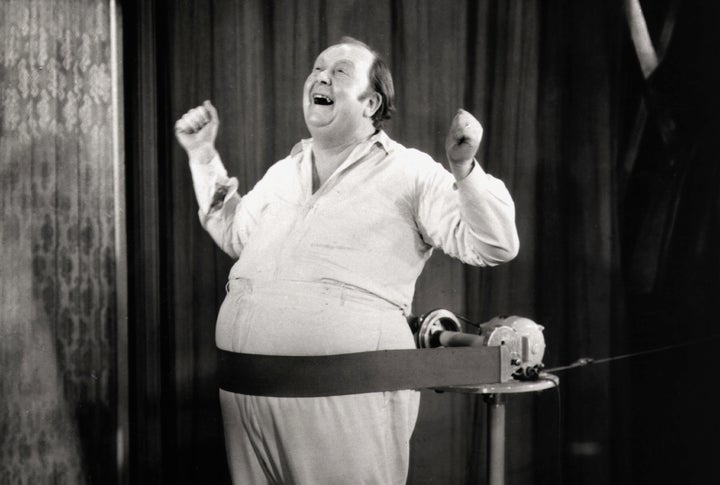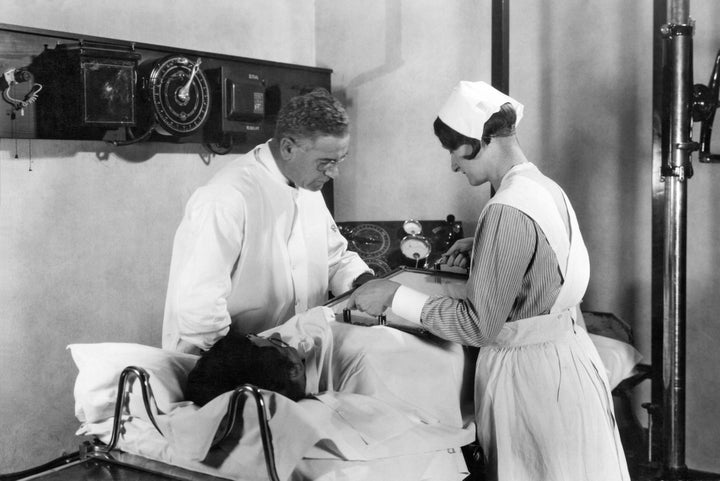If you’re familiar with trends like clean eating or intermittent fasting, you might think diet culture is hovering at peak weird. But extreme takes on eating are nothing new.
According to historian of medicine Louise Foxcroft, fad diets have been around since the 16th century, when a tell-all weight loss book by Venetian merchant Luigi Cornaro became a surprise bestseller with tips on extreme calorie restriction.

In her book ”Calories and Corsets: A history of dieting over 2,000 years,” Foxcroft describes how new media helped diet gurus capture larger audiences in the 19th and 20th centuries.
“There’s a whole diet industry that feeds on itself and feeds on consumers,” she told HuffPost. “And [there’s] an enormous amount of money to be made out of it.”
But for much of the past 200 years, dieting trends induced more eye rolls than scholarship. That’s a missed opportunity, according to Cornell’s Adrienne Rose Bitar, the author of “Diet and the Disease of Civilization.” “Diets,” she writes, “stand in for the bigger debate about history, salvation, money, power … and all the other ideas that make the world worth thinking about.”
Of the historical diets featured below, many have remarkable parallels to modern eating trends. Like modern clean eaters and juice cleansers, transcendentalist Bronson Alcott aspired to self-purification when he founded his short-lived vegan commune in Massachusetts in 1843. And as an industrialized America turned more sedentary through the 19th century, fears that men were losing their masculine edge gave rise to lumbersexual-like trends including beard-growing and big game hunting. In the early 20th century, Bernarr “Body Love” Macfadden tapped into that manly market with an all-milk diet that he traced to the era when men bought wives using cows for currency.
From wingnut meal plans to sex-starved vegetarians, these diets are just as quirky as whatever your friends are eating this week. We’ve lined up some favorites and asked registered dietitian nutritionist Jill Weisenberger, the author of ”Prediabetes: A Complete Guide,” to weigh in on whether you should trade your keto cookbook for a 19th-century food philosophy.
Dieters Against Masturbation
Next time you eat a graham cracker, thank anti-masturbation crusader Sylvester Graham whose signature whole wheat flour — graham flour — is the main ingredient. The minister and physician, who died at age 57 in 1851, believed in a vegetarian diet without white sugar, refined flour or spices, foods he saw as rocket-fuel for sexual urges. (Like many contemporaries, Graham thought masturbation led to mental illness.) While graham flour has lived on, it’s clear the preacher would detest the evolution of the use of its flagship product ― with its sensuous melted chocolate and marshmallow stuffed between two graham crackers, the s’more is less a campfire dessert than an oozing sex grenade.
Nutritionist says: “There’s nothing in here that horrifies me, but it’s more restricted than it needs to be,” Weisenberger said. She’s unfamiliar with studies that support Graham’s whack-a-doodle claims about masturbation.
Grade: C
Chewing And Spitting
If you’re tired of talking diets over dinner, call a Fletcherite. Since the followers of chewing-advocate Horace Fletcher — a.k.a. the Great Masticator — believed in champing their food at the rate of 100 bites per minute, they weren’t big on cross-table chat. According to Fletcher’s diet theory, you can shed pounds simply by chewing every mouthful to liquid then spitting out any remaining solids. As he wrote his 1899 diet book ”Glutton or Epicure,” Fletcher knew critics of his diet plan thought spitting food at the table was disgusting. But he handily dismissed their concerns: “This is merely a bugbear prejudice,” he wrote, “It has no good reason.”
Nutritionist says: “It would take all the fun out of eating, and it’s based on nothing,” Weisenberger said.
Grade: F

The Milk Diet
Fitness guru Bernarr Macfadden hit the turn-of-the-century diet scene with washboard abs and deeply questionable advice. He liked fasting and raw foods, but his strangest meal plan was simple — if nearly indigestible. Following a period of fasting, Macfadden prescribed an all-milk regime that he believed would restore health, heal injuries and clean the body cells of “organic toxins.” For every 25–30 pounds of body weight, Macfadden recommended about one quart of milk, topping out at a gut-cramping 28 cups a day.
Nutritionist says: “What you would get from milk is protein, fat and carbohydrates, but you wouldn’t be getting any fiber or phytonutrients.”
Grade: F
The Fruitlands Diet
The proto-locavore, hardcore vegans of the Transcendentalist commune Fruitlands started each day on their Massachusetts farm with a cold shower, fruit plate and a glass of water. Along with a ban on slave-produced goods and animal products, the Fruitlands diet was meant to purge humans of animalistic qualities. That went beyond avoiding honey and eggs: Alcott also refused to fertilize with manure and avoided downward-growing crops like potatoes, beets and carrots. Those dirt-dwelling veggies weren’t compatible with the higher aspirations of the commune, which endured for just 7 months from 1843 to 1844.
Nutritionist says: “People have very weird ideas.” While Weisenberger points to studies showing benefits of avoiding animal fats, she’s concerned that the Fruitlands diet might not be nutritionally complete.
Grade: C

The Special K Diet
Celebrity dieters like Sojourner Truth and Henry Ford checked into what eventually became known as the Battle Creek Sanitarium in Michigan for intestinal spring cleanings over the years. The facility also eventually came under the supervision of Dr. John Harvey Kellogg.
Like Sylvester Graham, Kellogg frowned on sex, alcohol and meat, and believed he could freshen up America’s intestinal flora with grains that were processed to facilitate digestion. The corn flakes he invented were dual purpose—their fibers would sweep guts clean, while the bland flavor was designed to calm overwrought sex drives. If that didn’t do the trick, Kellogg prescribed a pint of yogurt daily ― half as a snack, half as an enema.
Nutritionist says: “I don’t see anything super weird about it, but by having processed grain instead of intact whole grains you’re reducing particle size, and that’s an important aspect of gut health.”
Grade: C
While these might seem edgy for the petticoat era, Bitar believes most dieting movements — from the milk diet to made-for-Instagram clean eating — aren’t as novel as they first appear. “They’ll be like, ‘Eat grapefruits and do jumping jacks,’” she told HuffPost, “but actually look at them and they’re really conservative.”
Bitar’s research suggests that many of America’s historical diets are just variations on a theme. “All these diets react to ideas of newness and industrialization and the obesity epidemic and moral panic.” Often, she says, dieting gurus grope for the comfort of an imagined past.
Bitar, whose most recent work focuses on lab-grown meats, is concerned that Americans are so taken with nostalgia that they might miss key opportunities for positive change.
“The idea here is to return to a state of nature,” Bitar said. “Americans are so conservative … that it really sort of forecloses newness and innovation. There’s only so many ways you can eat meat or not eat meat, or eat carbs or not eat carbs.”
That strikes Bitar as a limitation when it comes to transforming how America eats. “Diets are really reluctant to embrace new technologies,” she said. “If it’s just going to be more of the same that’s not actually good for our food system.”
